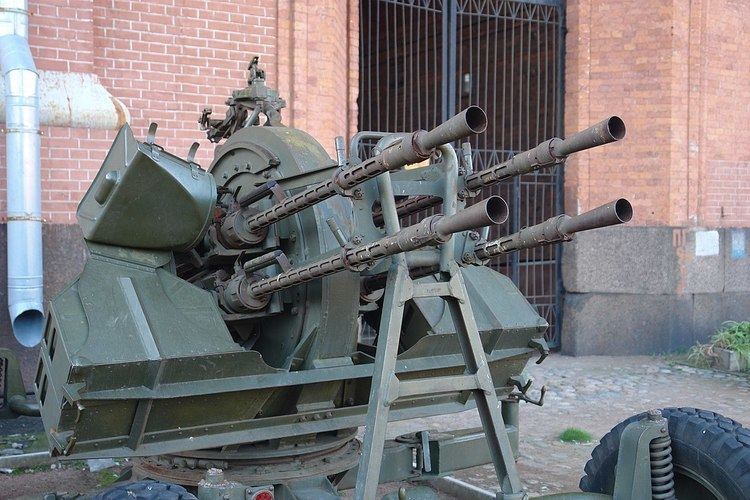In service 1949–present | Used by See Operators | |
 | ||
Wars Korean WarVietnam War2011 Libyan Civil WarSyrian Civil War Designer Семён Владимирович Владимиров | ||
The KPV-14.5 heavy machine gun (KPV is an initialism for Krupnokaliberniy Pulemyot Vladimirova, in Russian as Крупнокалиберный Пулемёт Владимирова, or КПВ) is a Soviet designed 14.5×114mm-caliber heavy machine gun, which first entered service as an infantry weapon (designated PKP) in 1949. In the 1960s, the infantry version was taken out of production because it was too big and heavy. It was later redesigned for anti-aircraft use, because it showed excellent results as an AA gun, with a range of 3,000 meters horizontally and 2,000 meters vertically against low flying planes. It was used in the ZPU series of anti-aircraft guns. Its size and power also made it a useful light anti-armour weapon on the BTR series of vehicles and the BRDM-2 scout car.
Contents
KPVT
The version for use in armoured vehicles is called the KPVT (tankoviy, 'tank'). KPVT is used for armoured vehicle installations, boats, movable and stationary mounts and various antiaircraft mounts. It features a shorter receiver and a heavier barrel jacket. The KPVT also uses a 50-round belt instead of the original 40-round belt. KPVTs are the primary armament of the wheeled BTR-60PB/70/80 series armoured personnel carriers and BRDM-2 armoured reconnaissance vehicles. It is intended for fighting against light armoured targets, weapons systems and light shelters at the distances of up to 3000 m, as well as air targets at distances up to 2000 m.
The distance at which the bullet retains lethal force is 8 km. The maximum flight range of the bullets is 9 km.
Naval armament
The naval version was called the marine tumbovaya (MTPU). It was mounted in the following turrets; 2M-5 was for torpedo boats, the 2M-6 for patrol boats, and the 2M-7 for trawlers. The 14.5mm marine pedestal machine gun mount (14.5mm MTPU) is intended for combat against armoured surface, coast and air targets. It is mounted on decks of boats and can defeat surface and coast targets with a range of 3,000 meters horizontally and 2,000 meters vertically against low flying planes.
Mechanics
The development of the machine gun began in 1944. The 14.5×114mm M41 cartridge can be used with High Explosive Incendiary - Tracer (HEI-T) or Armour-Piercing Incendiary (API) bullets, and they have approximately twice the energy of a 12.7 mm (.50 BMG) projectile. The KPV is air-cooled and fitted with barrel with a hard chrome plated bore. It uses a short recoil operation system with gas assistance and a rotary bolt. It can be fed with the 40-round metallic belt from either the left or right side. The barrel can be removed by turning the prominent latch on the forward end of the receiver and pulling on the barrel's carrying handle.
Versions
The ZPU is a towed anti-aircraft gun based on the KPV. It entered service with the Soviet Union in 1949 and is used by over 50 countries worldwide.
Quadruple- (ZPU-4) Double- (ZPU-2) and single-barreled (ZPU-1) versions of the weapon exist.
Ammunition
Rounds are also produced by Bulgaria, China, Egypt, Poland, and Romania.
